
Flight schedules are being cut back at Orlando International Airport (MCO) by 10% starting next week as holiday travel increases. Even this weekend, Delays and cancellations are already on the rise as an FAA Emergency Order ramps up. This post covers what’s happening, what to expect as the government warns of travel slowing to a “trickle” by Thanksgiving, and how to mitigate your risk if you have an upcoming Walt Disney World trip this holiday season.
This FAA Emergency Order comes after significant delays and cancellations about one week ago at MCO, when staffing shortages temporarily halted operations. Due to no certified air traffic controllers available overnight, MCO was under a ground delay program from 10 p.m. through 3 a.m. one evening.
At that time, the FAA warned of worsening disruptions while workers go without pay as a result of the government shutdown. The federal government entered a shutdown at midnight on October 1st when lawmakers failed to pass new funding bills. It’s unclear how long the stalemate will last, but lawmakers do not appear to be any closer to coming to an agreement that could reopen the government.
The federal government shutdown means air traffic controllers, Transportation Security Administration (TSA) agents, and other federal airport employees are working without pay. In turn, this increases the likelihood of employees calling in sick and leaving MCO and other airports understaffed. Last weekend, there were 2,740 delays at various airports around the US.
As part of the flight reduction order, U.S. Department of Transportation and Federal Aviation Administration outlined the proactive actions the FAA would take to maintain the highest standards of safety in the national airspace system. This includes achieving a temporary 10 percent reduction in flights at 40 high traffic airports across the country.
Since the beginning of the shutdown, controllers have been working without pay, and staffing triggers at air traffic facilities across the country have been increasing. This has resulted in increased reports of strain on the system from both pilots and air traffic controllers.
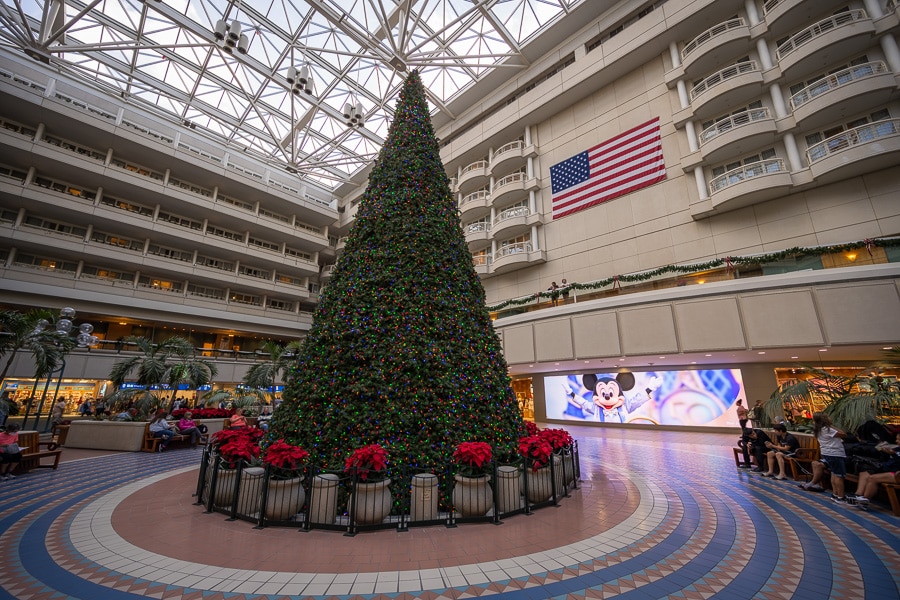

“My department has many responsibilities, but our number one job is safety. This isn’t about politics – it’s about assessing the data and alleviating building risk in the system as controllers continue to work without pay,” said U.S. Transportation Secretary Sean Duffy. “It’s safe to fly today, and it will continue to be safe to fly next week because of the proactive actions we are taking.”
“We are seeing signs of stress in the system, so we are proactively reducing the number of flights to make sure the American people continue to fly safely,” said Federal Aviation Administrator Bryan Bedford. “The FAA will continue to closely monitor operations, and we will not hesitate to take further action to make sure air travel remains safe.”
The Greater Orlando Aviation Authority also issued a statement on the Emergency Order:
This is expected to result in fewer arrivals and departures at MCO, which should slow the rate of activity in the National Airspace System and assist airports that are experiencing staffing challenges. Ultimately, this order maintains the highest level of safety.
To this point, Orlando International Airport has been fortunate that federal airport employees have continued to work and there has been minimal impact on airport operations. We deeply appreciate our federal partners for their commitment.
The reduction in flights is likely to impact passengers, unfortunately, and we ask that they check directly with their airlines regarding delays and cancellations.
The airport is fully staffed to assist as much as possible during this time.
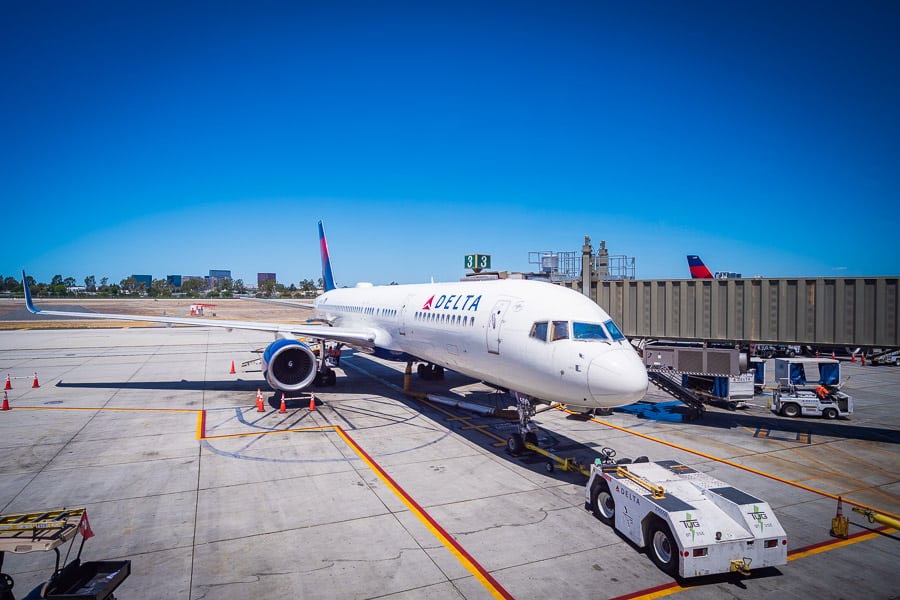

As a result of the FAA Emergency Order, 4% traffic reductions at 40 high-traffic airports are already in effect. These ramp up to 6% by Tuesday, November 11, then 8% by November 13, and the full 10% percent by November 14, 2025.
In addition to flight reductions, the FAA will also:
- Prohibit some visual flight rule approaches (VFR) at facilities with staffing triggers
- Commercial space launches and reentries will only be permitted between 10:00 p.m. and 6:00 a.m. local time.
- Prohibit parachute operations and photo missions near facilities with a staffing trigger.
These actions were directly informed by the FAA’s review of aviation safety data, including voluntary, confidential safety reports that pilots and air traffic controllers file. The data indicates increased stress on the system, which increases risk.


Airlines will be required to issue full refunds. They will not be required to cover secondary costs. This is the normal procedure when a delay or cancellation is not at the fault of the carrier.
The order does not require a reduction in international flights. Carriers may use their own discretion to decide which flights are canceled to reach the order’s goal. Decisions to increase or decrease these flight reductions will be informed by safety data.
This means that the 10% cancellation target could increase to 20% if there are still perceived safety risks in the data, or decrease to 5% on that same basis. Our purely speculative guess is that the reductions will increase, not decrease, until the government shutdown is resolved. It’s not as if air traffic controllers are suddenly going to start showing up to work in higher numbers after going without paychecks for additional time. This only gets worse until the underlying problem is fixed.
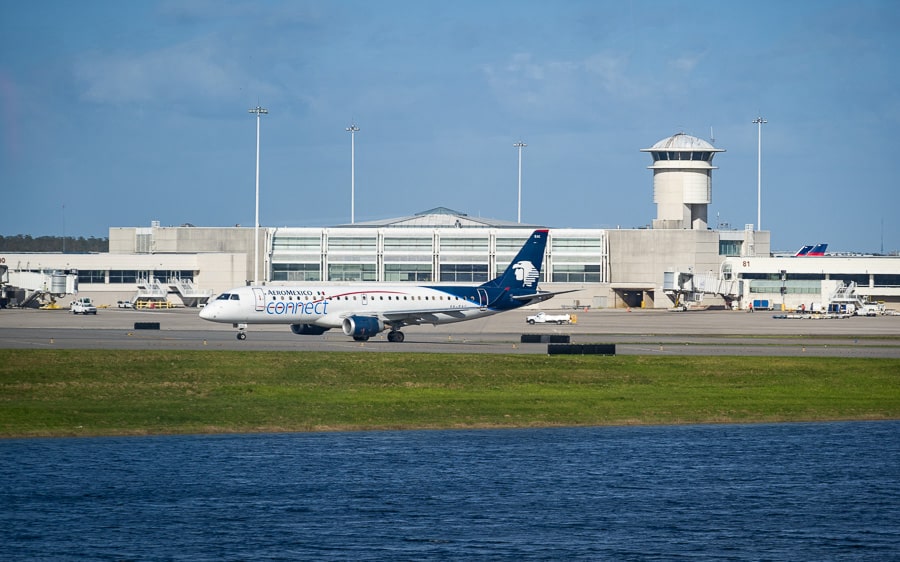

Transportation Secretary Sean Duffy more or less confirmed this on one of the Sunday shows. He warned that travel will be “reduced to a trickle” in the two weeks ahead of Thanksgiving, stating that a “substantial” number of Americans will not be able to spend the holiday with their families if the government shutdown drags deeper into November.
Duffy stated that 18 of 22 controllers in Atlanta didn’t show up to work on Saturday and that there were 81 staffing triggers nationwide. Hartsfield-Jackson Atlanta International Airport is the world’s busiest.
He added that retirements have spiked: “I used to have about four controllers retire a day before the shutdown. I’m now up to 15 to 20 a day.” As a result of these retirements and no-shows, an increased number of delay triggers are already being hit. This also means that the recover might not be like flipping a switch when the government finally does reopen.
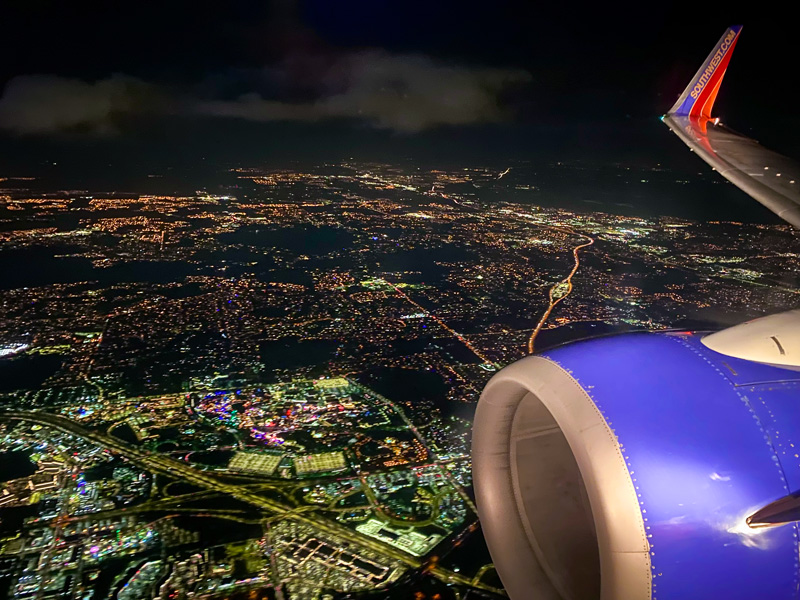

The 40 affected high impact airports include:
ANC – Ted Stevens Anchorage International Airport
ATL – Hartsfield-Jackson Atlanta International Airport
BOS – Boston Logan International Airport
BWI – Baltimore/Washington International Airport
CLT – Charlotte Douglas International Airport
CVG – Cincinnati/Northern Kentucky International Airport
DAL – Dallas Love Field
DCA – Ronald Reagan Washington National Airport
DEN – Denver International Airport
DFW – Dallas/Fort Worth International Airport
DTW – Detroit Metropolitan Wayne County Airport
EWR – Newark Liberty International Airport
FLL – Fort Lauderdale/Hollywood International Airport
HNL – Honolulu International Airport
HOU – William P. Hobby Airport
IAD – Washington Dulles International Airport
IAH – George Bush Houston Intercontinental Airport
IND – Indianapolis International Airport
JFK – New York John F. Kennedy International Airport
LAS – Las Vegas McCarran International Airport
LAX – Los Angeles International Airport
LGA – New York LaGuardia Airport
MCO – Orlando International Airport
MDW – Chicago Midway International Airport
MEM – Memphis International Airport
MIA – Miami International Airport
MSP – Minneapolis–St. Paul International Airport
OAK – Oakland International Airport
ONT – Ontario International Airport
ORD – Chicago O’Hare International Airport
PDX – Portland International Airport
PHL – Philadelphia International Airport
PHX – Phoenix Sky Harbor International Airport
SAN – San Diego International Airport
SDF – Louisville International Airport
SEA – Seattle–Tacoma International Airport
SFO – San Francisco International Airport
SLC – Salt Lake City International Airport
TEB – Teterboro Airport
TPA – Tampa International Airport
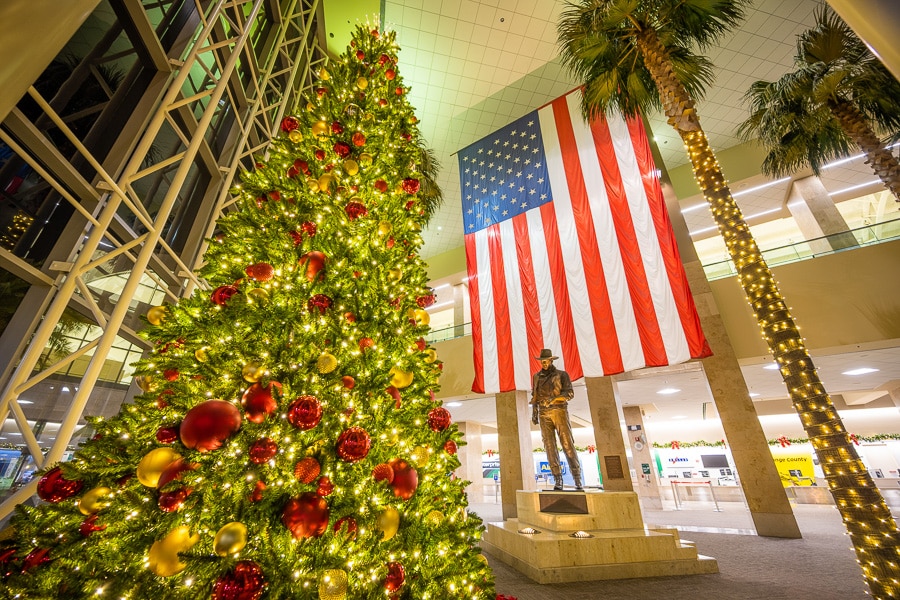

As you can see, there are several airports on this list that service both Walt Disney World and Disneyland. Our focus here is on Walt Disney World, but you need to be as mindful (if not moreso) if you’re flying into SNA to visit Disneyland. The latter is our home airport, so we’ll be covering that in the commentary, too.
At the time of publication, tracking resource Flightaware has reported 445 delayed flights and 60 cancellations into or out of Orlando in the last day. The most impacted airlines for cancellations are Delta and Southwest with 16 and 13, respectively. For delays, SWA has far and away the most, at 171 flights. Most other major airlines have 30-40 delays through MCO.
At the risk of stating the obvious, these numbers are all higher than normal. They are also lower than the numbers will be by next week when the cutbacks ramp up to the full 10%, should the government shutdown continue to drag on. The current numbers are the result of a 4% cutback.
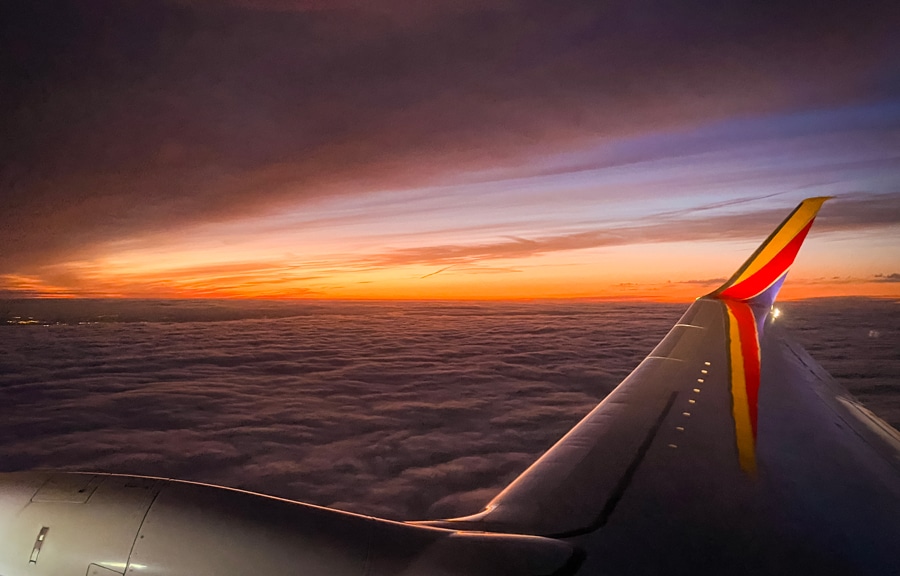

This Emergency Order followed a warning that Vice President JD Vance had issued previously of impending “disaster” if the government shutdown continued closer to the heart of the holiday travel season.
They argued that the increased volume and worsening winter weather would increase the demands on air traffic controllers just as working without pay could become untenable. They explained that many federal employees can withstand missing one paycheck, but none of them can get through two missing paychecks.
Air traffic controllers were already overburdened before the shutdown, with widely-reported issues at major East Coast airports due to staffing shortages and antiquated systems. There are reportedly 3,000 vacant jobs in a 14,000-position workforce, which had created a staffing crunch and mandatory overtime for many. That meant that many air traffic facilities did not have enough staffing to accommodate absences, regardless of the cause.
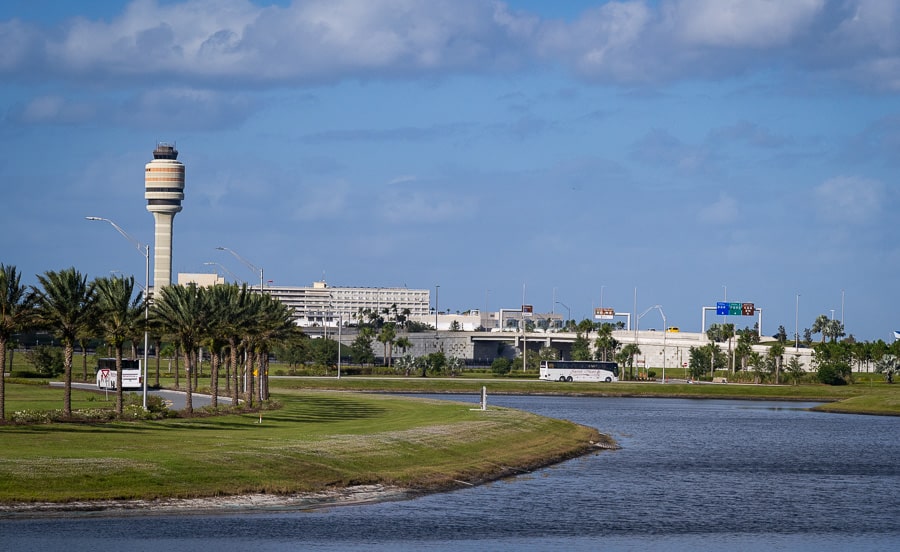

During the government shutdown, MCO is encouraging passengers to use the FlyMCO website or Orlando MCO app to stay current about airport operations. We would second this recommendation, and advise utilizing these resources during any busier dates, storm season, school breaks, or any time the weather forecast suggests there might be delays–so in other words, pretty much always!
Orlando International Airport is currently in the midst of its first true test of holiday season travel thanks to Jersey Week, Veterans Day, and the start of the holiday season are right around the corner. This confluence of circumstances cause this week to make our list of the 10 Worst Weeks to Visit Walt Disney World in 2025.
We flew into MCO recently, after the overnight meltdown due to a lack of no certified air traffic controllers but before the traffic cutback. Our experience was completely uneventful. Our flight landed early, deplanned quickly, and our suitcases were at baggage claim in record time.
If I didn’t know any better, I would’ve thought it was still the off-season and things were business as usual. Our return flight won’t be until the cutbacks are fully ramped up. I feel like we got a little too lucky on arrival, and the metaphorical bill for that is going to come due when we head home.
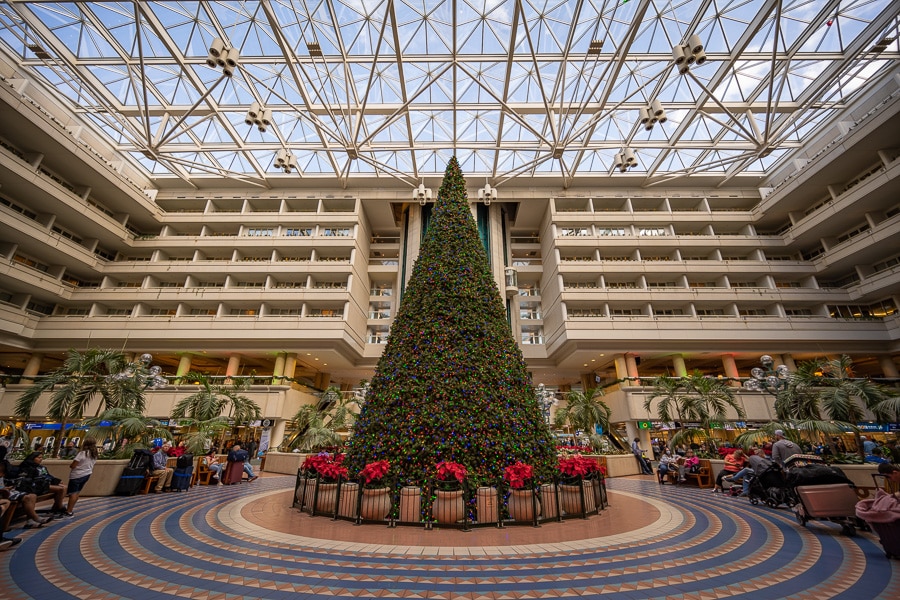

At present, our flight home has not been cancelled…yet. I also wouldn’t expect that cancellation to occur until fairly last-minute, as the airlines are likely in wait-and-see mode, hoping for a resolution to the government shutdown before unnecessarily upending their schedules. They don’t want to lose booking revenue that can’t be recovered.
What I do see is that we have options to change or cancel our flights with no fees beyond what’s normally available at our fare class. We haven’t availed ourselves of this yet, but will consider doing so in a couple days if there isn’t more clarity to the situation.
If at all possible, we’d recommend giving yourselves as much flexibility as possible. If there’s a major airport with nonstop flights that’s a bit farther from you, opt for that as opposed to a closer regional airport with a layover.
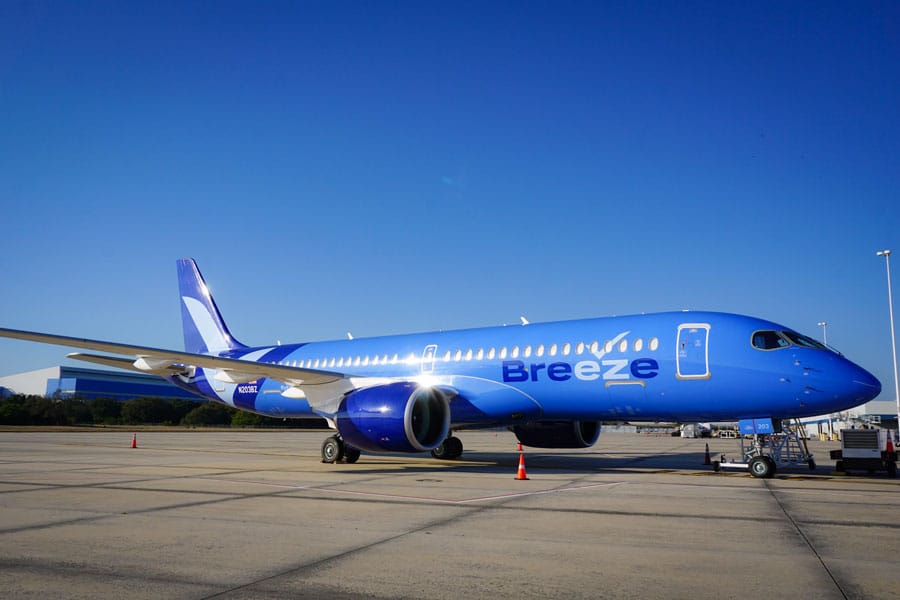

This is precisely what we’re doing, with plans to fly into LAX as opposed to SNA. It might seem like we have that exactly backwards, since LAX is on the cancellation list but SNA is not. However, we can’t get a nonstop flight into SNA–and every single option would go through an airport that’s subject to the cutbacks. So all that would do is shift the theoretical delay from being stuck at Walt Disney World to stuck in some other city.
There are a few nonstop flights into LGB, but those are so few and far between that any impact there would be colossal. San Diego is another option, but the lack of nearby alternatives makes me weary. I’d rather just do MCO-LAX nonstop, hope for the best, but have a ton of potential pivots should the worst case play out.
We also recommend using a major legacy airline, like Delta or United. Avoid ultra low-cost carriers, especially the ones that fly fewer routes, don’t have reciprocal relationships with other airlines, and are less responsive when issues arise since they compete on price and not customer service. There isn’t a chance on earth that I’d be flying Frontier, Breeze or Spirit right now. Maybe you’ll get lucky, but that’s just playing with fire.
Of course, there’s also the option of driving if you’re within a reasonable distance. “Reasonable” is obviously in the eye of the beholder–I’ve spotted a shocking number of Canadian license plates in the Walt Disney World parking lots.


We’d also recommend arriving at MCO earlier than normal to give yourself sufficient time to get through security and any other delays you might encounter. If you haven’t already booked flights, I would also err on the side of earlier arrival and departure times, to give yourself a buffer in the event of delays or cancellations. It may not help, but it very well might.
If you’re eligible, use the free Airport Luggage Transfer at Walt Disney World. This is totally unrelated to the government shutdown; just good advice during busier times of year at MCO. (See the above about luggage drop-off delays.)
We would also caution against using Mears Connect for returning to the airport (from MCO to WDW is fine). Although we’ve never had issues, we’ve heard horror stories, and with the likelihood of increased delays in getting through security, your margin for error is much more slim.
(For the first time in a long time, we opted to rent a car for this trip. That was a last-minute pivot we made due to the prospect of travel disruptions just to give ourselves flexibility. Even booking it at the absolute last minute, we got a relatively good deal. Still more expensive than just using Mears Connect and free Disney transportation, but worth it to us in this scenario.)


Even if the government shutdown ends and things go back to normal before flight cancellations hit or exceed 10%, be advised that “normal” during peak holiday weeks at MCO is nothing like it used to be.
As we’ve repeatedly reported, MCO has broken passenger volume records over the course of the last couple of years and almost all of its busiest days, weeks, and months ever have occurred since 2022. The airport is only just starting to slow down and not see year-over-year growth.
The current rolling 12-month total is 56,737,251 passengers, which is still close to record levels and well above the 2019 baseline. This is largely due to a decrease in domestic travelers, as the international volume continues to show robust growth and set new records.
These numbers are extraordinary and reflective of the airport more or less hitting a soft ceiling on its operational capacity. Especially during November and December, the airport is bursting at the seams and has unsatisfied demand. That’ll be even worse in 2025 if there’s an extended stretch of 10% or more flights being cancelled.


Anyone who has traveled through MCO in the last few years has probably seen this, and it doesn’t really matter what time of year, what time of day, etc. The airport is almost always busy.
Seating areas at the gates are so full that they’ve added overflow seating to walkways, and those are now full. The parking lots routinely are full, there’s traffic congestion just dropping people off or making pickups, lines to get through TSA are often 30+ minutes–you get the idea.
We experienced this first-hand and documented it in Our Awful Airport Experiences at Walt Disney World from last Christmas. Those were major problems getting from Walt Disney World to MCO, and then at the Delta counter for self-service luggage drop. That line ended up taking me over an hour. Just to drop off a bag and verify my ID.


Ultimately, if you’re flying into or out of Orlando International Airport as part of a holiday-time trip to Walt Disney World, you need to pack your patience…and your politeness. Regardless of your feelings on the federal government shutdown, we can all agree that the frontline employees have no say in the matter and that it’s very difficult to work without pay. We should all be grateful that they’re there and doing their jobs, even if it comes with delays and cancellations.
So be thankful and express a little gratitude, as opposed to rudeness. It’s easy to forget this when you’re flight gets unexpectedly cancelled or delayed, and your plans are disrupted or upended. It’s nevertheless important to remember. For one, it’s the right thing to do. For another, you catch more flies with honey than with vinegar. In other words, if you’re asking for assistance or accommodation, your odds of success are higher if you’re nice.
Planning a Walt Disney World trip? Learn about hotels on our Walt Disney World Hotels Reviews page. For where to eat, read our Walt Disney World Restaurant Reviews. To save money on tickets or determine which type to buy, read our Tips for Saving Money on Walt Disney World Tickets post. Our What to Pack for Disney Trips post takes a unique look at clever items to take. For what to do and when to do it, our Walt Disney World Ride Guides will help. For comprehensive advice, the best place to start is our Walt Disney World Trip Planning Guide for everything you need to know!
Your Thoughts
What do you think about the 10% flight cancellations at MCO and 39 other major US airports? Expect this to get worse before it gets better? Please avoid any political or antagonistic comments; obviously, this is caused by the federal government shutdown, which is inherently political, but there’s a way to discuss the result and impacts without dragging personal politics into this. Otherwise, hearing your feedback–even when you disagree with us–is both interesting to us and helpful to other readers, so please share your thoughts below in the comments!










